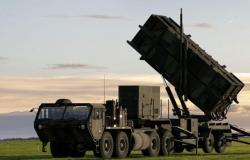Realm decided to make important camera-level changes in his case realme 12 Pro+, if we look at the predecessor. That stood out through the 200-megapixel main camera, being its strong point, but now the company is making an interesting move and focusing on something we don’t really see in the mid-range segment, a periscope camera!
The photo setup now includes a 50-mpx wide main camera with f/1.8 aperture, equivalent to 24mm, using a 1/1.56″ IMX890 sensor with 1.0µm pixels. It has multi-directional PDAF as well as optical image stabilization OIS. It is joined by an ultra-wide 8-megapixel camera with f/2.2 aperture, 16mm, 112 degrees, 1/4.0″ sensor and 1.12µm pixels, unfortunately no autofocus and also no macro capture .
The most important camera in the massive rear setup is the periscope telephoto, 64 mpx, f/2.8, 71mm camera with PDAF, OIS and 3x optical zoom. We have 0.7µm pixels and the 1/2.0″ sensor is an OmniVision OV64B, 2.2 larger than the telephoto sensor used on the iPhone 15 Pro. It uses 4-in-1 Pixel Fusion technology for 64mpx resolution, and realme is particularly promoting 3x optical zoom for capturing subjects, thus enabling closer shots without loss of detail.
We also have the 6X In-Sensor Zoom mode, and the maximum zoom reached is 120x, so you can also photograph the moon using the dedicated MOON Mode 2.0 mode. We can film 4K at 30fps, or 1080p at 30, 60 or 120fps with gyro-EIS stabilization. We also check the LED flash, HDR. In the Camera application we find the options one by one Night, Street, Video, Photo, Portraitplus the area Moreau where it appears Pro, Pano, Hi-Res, Movie, Slo-mo, Time-Lapse, Long Exposure, Dual-view Video, Text Scanner, Starry Mode, Group Portrait and Tilt Shift.
Last but not least, we must also talk about the front camera cut into the screen, 32 mpx unit with fixed focus, f/2.4 aperture, the equivalent of 22mm and with 1080p@30fps filming. Now that we’ve covered what we’re working with on the realme 12 Pro+, I’d say it’s time to also discover how the photo and video samples look!
Selfies
The first type of capture on the list is the selfie where I captured a rather cold and dark day which gave some problems to the process, right from the start the overexposure in the back was noticed. There is a lot of sharpness and although the details are visible on the face, it seems that the skin is somehow rendered dry, in the conditions where all the filters and beautification modes have been disabled.
Overexposure is problematic and something to watch out for. In the gallery you can also find a series of samples from the interior where things are much better, the conditions being stable, without variations in brightness. Portrait mode does a good job and the complexion looks much more natural. At night the quality drops as expected and the screen flash doesn’t help either, lighting up the face excessively. Only in brighter places results worthy of posting online.
Photo of the day
Next we discuss the general captures during the day, with different scenarios among the neighborhoods of sector 6 and Moghioroș park. The images are detailed, I like the textures and I see that the tones are preserved from wide to ultra-wide, maybe a little darker that’s right at ultra-wide and with a little deformation towards the edges noticed especially when there are cars in the frame .
The sky caused some photos to have a smooth effect in some poses, and if there was something to criticize then it is clearly the HDR which is not very effective in these conditions captured during the day with the photo samples. I am convinced that a sunny day would bring out the beauty in these images, because the dark tones take over the entire gallery, giving the impression of a genuine winter day and not spring as it actually was.
With an update that will solve some of the shortcomings, the realme 12 Pro+ will perform as well as its rivals in the segment for daytime capture. Only minor adjustments needed.
colors
Considering the dark day when the photos were taken I can say that I am satisfied with the colors delivered here by the realme 12 Pro+ camera, although there are still scenarios where the colors look oversaturated or unnatural, especially noticed at that fence around the place playground for children. Vegetation looks good, as do those colors in the Drumul Taberelor area, with a clear tricolor rendered even at zoom. The green of that tram looks good as well as the blue of the cars.
Zoom
We also got to the zoom where expectations are high considering the fact that the phone is promoted especially for the periscope camera it comes with. To refresh your memory, the phone offers 3x optical zoom and 120x digital zoom, something you’d normally find on a flagship. There are many samples in the zoom gallery, even up to the maximum threshold on that Auchan logo, where the text remains visible except for the noise.
I like the fact that the colors are preserved, their naturalness even at a high level of zoom. If you go down to 3x you’ll get most of the detail, but what I noticed here is that the HDR doesn’t really make itself felt, with parts of the image seriously dark, something that shouldn’t have happened even in the cloudy day scenario when the photos were taken.
At 5-6x things continue to look good, but I seem to notice smoother areas in some frames. The main problem is the dark tones that are not brought out by HDR, something that should be solved by a future update. realme recommends even at 3x zoom to use a tripod and adjust the focus manually to get quality shots. A zoom with potential but still needs adjustments.
Closeup/bokeh
When taking a closeup, I’m really satisfied with what the phone delivers, with as much detail as possible, natural colors and well-rendered textures, even up close, as if you were shooting a macro, although there is no dedicated mode for this type of photos. You can see the rust on that pole in the park, and the fir buds photographed up close look really good. And the metallic sheen of the faucet was captured well although I see some smoother edges here.
With portait/bokeh the experience is mixed, because you have some work to get quality frames. An example is the one with the pigeon where the camera insisted that I zoom in even though I was on zoom, and the pigeon was caught in motion just before it took off. The yellow flowers in the park look good, with an almost perfectly applied blur, and some problems happened when capturing the flowers in the trees where the focus was a bit confused, not knowing where the branches start and end or getting the frame completely wrong.
Night
At night the results are reasonable I would say, with a Night Mode that does the job it was created for, managing to bring out seriously dark elements. There are many such examples in the gallery here, and with Night Mode the luminous logos of the stores are also dimmed.
However, there is no lack of noise and the details decrease, and at zoom the results really look good up to 5-6x as seen in that church dome. You won’t get quality photos on ultrawide, so you limit yourself to wide and zoom. I see that subtle halos of the lighting fixtures are also preserved and that, unlike other phones, Night processing is not involved here and on the standard, being situations where you may not need the dedicated night mode.
Video
We have also reached the video and the first type of capture on the list is the selfie, where things are not so good. Lots of shaking, poor on-the-go stabilization and background overexposure even on such a fairly dark day. Textures and details look ok, but I definitely don’t recommend shooting on the fly. For vlogging you need a gimbal and ideal conditions.
In terms of colors, the fence looks fixed as in the photos, a little oversaturation from a distance, but when you get closer to the desired element, the rendered shade is somehow more realistic. On stabilization there are several samples taken here, starting with the standard ride on flat terrain where things look passable, except for the occasional shake. Microphones unfortunately also pick up a lot of ambient noise. Climbing the stairs in the park presents an appreciable stabilization.
In 4K, the stabilization drops as well as the quality, and the movements are a bit dizzying, and here, although there are extra details and quality, you definitely need an external stabilization source such as a gimbal or to limit yourself to filming on the spot. Further on, we also have zoom samples, where, just like in the photo, you have quality up to 4-5x and you can go up even more if you want to capture the target object more closely, with the disadvantage of a loss of details and the appearance the noise.
After about 10x, a darkening of the surrounding environment is also observed. I would have liked the continuous zoom to have a smoother effect without judder. When focusing, the camera is as good as it can be, and this can be seen in the sample with focus on the fir branches.
Finally we also take a look at the night footage, starting with a dark frame among the blocks, with lots of black, yellow tones and large halos of lighting fixtures plus an iPhone-like lens flare. On the street with even more light sources, the flare also increases, and the strong lights kind of overturn the camera and darken the background a lot. The stabilization also loses its moisture but somehow the zoom looks good even at high thresholds.
All in all a good and bad camera, clearly mid-range level and delivering a balanced experience that would need software optimization to solve some of the shortcomings. I’m surprised to see that the IMX890 sensor used here doesn’t live up to expectations, having made a very good impression especially after using it on the OnePlus Nord 3.
Tags: Typical midrange camera updated telephoto periscope optical zoom
-





